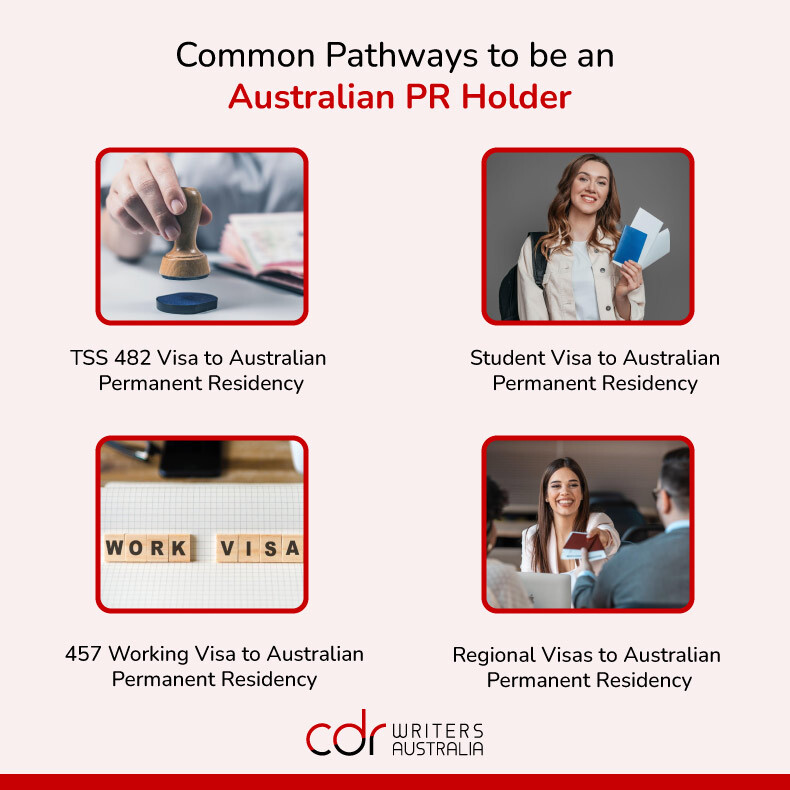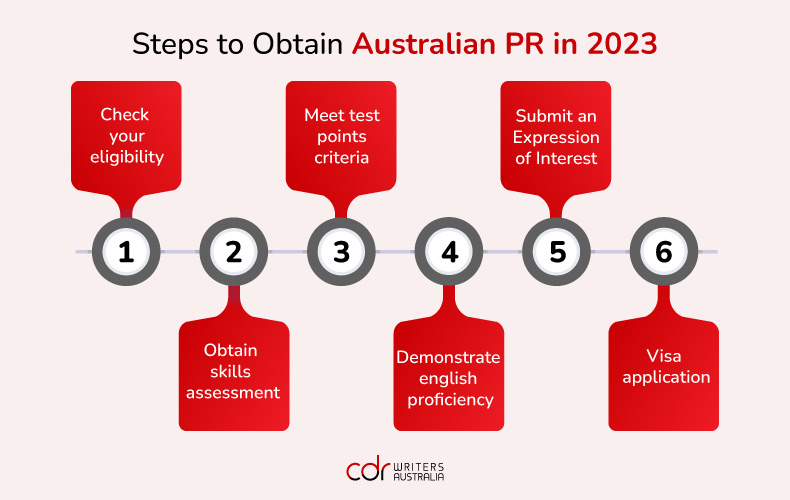Unlocking Your Dreams: Ultimate Guide to Australian PR Pathways

Unlocking Your Dreams: Ultimate Guide to Australian PR Pathways
Achieving Australian Permanent Residency (PR) is a dream for many, offering a world of opportunities and a high quality of life. To become an Australian permanent resident, there are different pathways depending on the client’s individual circumstances.
In this comprehensive guide, we will walk you through various pathways to Australian PR, providing valuable insights and tips to help you realize your dream.
Understanding Australian Permanent Residency
Australian Permanent Residency (PR) is a coveted status that grants individuals the right to live, work, and study in Australia indefinitely. It’s a pathway to becoming a part of the Australian community and enjoying the benefits that come with it. Holding Australian PR provides a sense of security and stability, making it a desirable goal for people around the world.
Read More: Statutory Declarations and Affidavits for ACS Skill Assessment. 💡💡
Benefits of Having Australian PR Status
Holding Australian PR status comes with a range of benefits that contribute to a high quality of life. PR holders have access to Australia’s world-class healthcare system, education facilities, and social security benefits.
They can work for any employer, pursue their desired field of study, and travel in and out of the country without restrictions. Additionally, PR status sets the stage for potential citizenship, allowing you to become a full-fledged Australian citizen after meeting certain requirements.
Common Australian PR Pathways

1. TSS 482 visa to Australian Permanent Residency
The Temporary Skill Shortage (TSS) subclass 482 visa is an Australian work visa that allows skilled workers to come to Australia and work for an approved employer for up to four years. This visa is intended to address temporary skill shortages in the Australian labor market.
While the TSS 482 visa is a temporary visa, it can potentially serve as a pathway to Australian Permanent Residency (PR) under certain conditions. One common pathway from the TSS 482 visa to PR is through the Employer Nomination Scheme (ENS) subclass 186 visa.
Learn More: Engineering Technologist Immigration to Australia for PR Visa. 💪🏽💪🏽
The ENS visa is a permanent employer-sponsored visa that allows skilled workers to live and work in Australia permanently. To transition from a TSS 482 visa to an ENS 186 visa, you generally need to meet the following requirements:
- Work Experience: You need to have worked for your nominating employer on a TSS 482 visa for at least three years in the same occupation (unless transitional arrangements apply).
- Occupation: Your occupation must be on the relevant occupation list for the ENS 186 visa.
- Skills Assessment: You might need to undergo a skills assessment to prove that you have the required qualifications and skills for your nominated occupation.
- Age: There is no age limit for the ENS 186 visa, but different age-related requirements might apply depending on your circumstances.
- English Language Proficiency: You might need to demonstrate English language proficiency, either through testing or exemptions based on your passport or previous studies.
- Health and Character Requirements: You and your family members must meet health and character requirements.
- Nomination: Your employer needs to nominate you for the ENS 186 visa and meet the relevant nomination criteria.
- Meeting PR Criteria: You need to meet the permanent residency criteria for the ENS 186 visa, including meeting health, character, and other relevant requirements.
2. Student Visa to Australian Permanent Residency
Transitioning from a student visa to Australian Permanent Residency (PR) is a common goal for many international students. While it’s important to note that each case is unique and subject to immigration policies that can change over time, here are some general pathways that students might take to achieve PR after studying in Australia:
- Skilled Migration Pathways
General Skilled Migration (GSM) Subclass 189, 190, 491: If you have completed a course in Australia that is relevant to an occupation on the skilled occupation list, you might be eligible to apply for a GSM visa. The Subclass 189 visa is a points-tested visa that doesn’t require employer sponsorship, while the Subclass 190 and 491 visas are state or territory-nominated visas.
- Temporary Graduate Visa (Subclass 485)
Temporary Graduate Visa (Subclass 485) visa allows international students who have completed at least two years of study in Australia to work and stay temporarily for 18 months to 4 years (depending on the stream) after completing their studies. It provides an opportunity to gain work experience in Australia and potentially improve eligibility for permanent residency.
- Employer-Sponsored Visas
If you secure a job with an Australian employer willing to sponsor you, you might be eligible for an employer-sponsored visa such as the Employer Nomination Scheme (Subclass 186) or the Regional Sponsored Migration Scheme (Subclass 187). These visas can lead to permanent residency.
- Partner or Family Visas
If you have a partner who is an Australian citizen, permanent resident, or eligible New Zealand citizen, you might be eligible for a Partner visa. Similarly, certain family members of Australian citizens or PR holders might be eligible for Family visas.
- Investor and Business Visas
If you’re interested in investing or starting a business in Australia, there are visa options like the Business Innovation and Investment (Subclass 188) visa, which can lead to permanent residency.
Read More: Top 6 most employable degrees in Australia. 🌟🌟
- Global Talent Independent Program
This program is designed to attract highly skilled individuals in specific industries to Australia. If you have an internationally recognized record of exceptional achievement, you might be nominated for this program, which can lead to PR.
- Points-Tested Visas
Some visas, like the General Skilled Migration (Subclass 189), require meeting specific points criteria based on factors such as age, English language proficiency, work experience, and more.
3. 457 working visa to Australian Permanent Residency
The Subclass 457 visa has been replaced by the Temporary Skill Shortage (TSS) Subclass 482 visa. However, the pathway from a TSS 482 visa (or its predecessor, the Subclass 457 visa) to Australian Permanent Residency (PR) is still available through various options. Here are some common pathways:
- Employer Nomination Scheme (ENS) Subclass 186 Visa
If you’re currently on a TSS 482 visa and have worked for your employer for at least three years in the nominated occupation (or two years if transitional arrangements apply), you might be eligible for the ENS 186 visa. This is a permanent employer-sponsored visa that can lead to PR.
- Regional Sponsored Migration Scheme (RSMS) Subclass 187 Visa
Similar to the ENS visa, the RSMS 187 visa is a permanent employer-sponsored visa. It requires you to have worked for your employer in a regional area for a specified period of time.
- General Skilled Migration (GSM) Subclass 189, 190, 491 Visas
If your occupation is on the relevant skilled occupation list and you meet the points requirements, you can apply for a GSM visa. The Subclass 189 visa is a points-tested visa that doesn’t require employer sponsorship. The Subclass 190 and 491 visas are state or territory-nominated visas.
- Temporary Graduate (Subclass 485) Visa
If you’ve completed at least two years of study in Australia and meet the other requirements, you might be eligible for the Temporary Graduate visa. This visa allows you to work and live in Australia temporarily after your studies, providing you with an opportunity to improve your eligibility for PR.
- Global Talent Visa (Subclass 858)
If you’re exceptionally talented or highly skilled in a specific field and can demonstrate an outstanding record of achievement, you might be eligible for the Global Talent visa. This visa can lead to PR and doesn’t require employer sponsorship.
- Business and Investor Visas
If you’re interested in starting or investing in a business in Australia, there are various business and investor visa options that can eventually lead to PR.
Editor’s Choice: What is ACS RPL Assessment for Australian Immigration? ✈️✈️
4. Regional visas to Australian Permanent Residency
Regional visas in Australia offer pathways to Permanent Residency (PR) for individuals who are willing to live and work in regional areas. These visas are designed to distribute population growth and economic activity outside major cities. Here are some common regional visa pathways to Australian Permanent Residency:
- Regional Sponsored Migration Scheme (RSMS) Subclass 187 Visa
The RSMS visa allows employers in regional areas to sponsor skilled workers for PR. There are two streams: the Direct Entry stream and the Temporary Residence Transition stream. The Direct Entry stream requires a skills assessment and a genuine job offer in a regional area. The Temporary Residence Transition stream is for holders of Subclass 457 or Subclass 482 TSS visas who have worked for their employer in a regional area for at least three years.
- Skilled Regional (Subclass 887) Visa
The Subclass 887 visa is a permanent visa for individuals who have lived and worked in a specified regional area of Australia on a valid visa for at least two years. It’s a pathway for those who have held certain temporary visas, including the Subclass 489 or 491 regional visas.
- Skilled Work Regional (Provisional) Subclass 491 Visa
This visa is for skilled workers who are nominated by a state or territory government or sponsored by an eligible family member to live and work in a designated regional area for up to five years. After fulfilling the requirements, you can apply for the Subclass 191 Permanent Residence (Skilled Regional) visa.
- Skilled Employer Sponsored Regional (Provisional) Subclass 494 Visa
This visa allows employers in regional areas to sponsor skilled workers. It has a pathway to PR through the Subclass 191 visa, provided you meet the requirements after holding the Subclass 494 visa for a specific period and have complied with the conditions.
- State or Territory Nominated Visas (Subclass 190 and Subclass 491)
Some states and territories have their own nomination programs where they can nominate skilled workers to live and work in their region. Both the Subclass 190 and Subclass 491 visas have pathways to PR after meeting certain conditions.
- Business and Investor Visas (Regional)
There are also business and investor visas with regional pathways that can lead to PR if you’re interested in establishing or investing in a business in a regional area.
Skilled Migration Pathways
Skilled migration visas, including Subclass 189, 190, and 491, are among the most sought-after pathways to Australian PR. These pathways are designed to attract individuals with valuable skills that contribute to Australia’s economic growth.
The eligibility criteria and points-based system evaluate factors such as age, education, work experience, language proficiency, and more. The skilled migration pathway provides a clear route to PR for those who meet the requirements and have skills in demand in the Australian job market.
Eligibility Criteria and Points-Based System
To qualify for skilled migration visas, you need to meet specific eligibility criteria. These criteria vary based on the visa subclass and your individual circumstances. The points-based system assigns points to different factors, such as age, education, work experience, and English language proficiency. The higher your points score, the better your chances of receiving an invitation to apply for a skilled migration visa.
Steps to Secure a Skilled Migration Visa
Securing a skilled migration visa involves a step-by-step process. First, you need to submit an Expression of Interest (EOI) through the online SkillSelect system. If you receive an invitation, you can then apply for the visa.
The application process requires submitting supporting documents, undergoing health and character assessments, and meeting other requirements. Seeking professional advice can greatly enhance your chances of success.
a. Navigating Changes in the Skilled Occupation List (SOL)
The Skilled Occupation List (SOL) outlines the occupations that are in demand in Australia. It’s important to keep an eye on changes to the SOL, as it can affect your eligibility for certain skilled migration visas. Occupations may be added or removed based on Australia’s economic needs. Staying informed about updates to the SOL is crucial for planning your skilled migration pathway.
b. Family Sponsorship: Building Bonds, Gaining Residency
Family-sponsored visas provide a pathway to Australian PR for individuals with close family members who are Australian citizens or PR holders. These visas, including Subclass 820, 801, and 143, facilitate the reunion of families and loved ones on Australian soil.
c. Options for Family-Sponsored Visas
Family-sponsored visas are available for partners, parents, and other family members of Australian citizens or PR holders. Partner visas cater to spouses and de facto partners, while parent visas allow parents to join their children in Australia. Other family-sponsored options include visas for aged-dependent relatives and remaining relative visas.
Steps to Obtain Australian PR in 2023 via General Skilled Migration Program

Step 1: Check your eligibility
The initial and essential step involves determining the occupation category that aligns with your skills and expertise according to Australian Immigration standards. This occupation should correspond to one of the visa lists associated with the program.
Accurate alignment is critical, as different visa categories have specific occupation lists. Failure to find your occupation on these lists disqualifies you from applying for a General Skilled Migration Visa.
Step 2: Obtain Skills Assessment
Securing a positive Skills Assessment, also known as career validation or recognition, from the relevant assessing authority is the next pivotal step. Different occupations have distinct Skills Assessment Authorities responsible for evaluating your qualifications and experience. For instance:
- Engineers: Engineers Australia
- IT Professionals: Australian Computer Society (ACS)
- Nurses: Australian Nursing & Midwifery Accreditation Council
- Marketing Professionals: VETASSESS
Each authority enforces specific prerequisites for approving skills assessments, including work experience, qualifications, and language proficiency. Familiarizing yourself with your occupation’s assessment authority and its requirements is paramount before embarking on visa application planning.
Step 3: Meet Points Test Criteria
The Skilled Migration Visas (189, 190, and 491) operate on a points-based system, necessitating applicants to fulfill certain criteria and accrue points across various categories. This methodology enables the Department of Home Affairs to identify and select candidates with desired skills and attributes. The minimum points threshold to submit an Expression of Interest for these visas is 65. Points are allocated across categories including:
- Age: 18 to 45 years
- Academic Qualifications: Certificates, Diplomas, Degrees, and PhDs
- Work Experience: In the nominated occupation, both within Australia and abroad
- English Proficiency: Achieving minimum English exam scores
- Study in Australia: Qualifications obtained and location of study
- Study in Low Population Areas: Extra points for studying in designated regions
- Accreditation as Translator: Points for language translation skills
- Skilled Spouse: Partner’s skills and English proficiency
- Single Applicants: Points to mitigate disadvantage
- Professional Year: Additional points for completing a professional year
- State Nomination/Sponsorship: Points based on state or territory needs
Step 4: Demonstrate English Proficiency
All PR applicants for the specified visas must prove Competent English (a score of 6 in each test component). This necessitates undergoing an English language test. However, citizens of the UK, US, Canada, Ireland, and New Zealand are exempt from this requirement. Various accepted tests include IELTS and PTE. Bolstering your English score beyond the minimum of 65 points can enhance your eligibility, with scores of 7 or 8 yielding additional points.
Step 5: Submit an Expression of Interest
Gaining entry into Australia on a PR visa mandates receiving an official invitation from the Government. This invitation-based process applies to both Independent 189 visas and regional 190 or 491 visas, which also involve states and territories.
SkillSelect, a system that ranks candidates based on their points test scores, facilitates this invitation process. In a competitive landscape, aiming for a higher score is advisable, especially for the 189 visa category.
Step 6: Visa Application
Upon receiving an invitation through SkillSelect, the final stride is to prepare and lodge your visa application. At this stage, you must provide substantial evidence substantiating the claims made during the points test stage and Expression of Interest (EOI).
Conclusion
Embarking on the journey to Australian Permanent Residency might seem overwhelming, but armed with knowledge and determination, you can make this dream a reality. Each pathway comes with its own set of challenges and rewards, but with the right guidance and preparation, you can unlock the doors to a brighter future in Australia. Remember, your Australian PR journey begins with taking the first step toward your dreams.
If you need any help regarding the CDR report, RPL report, KA02 report, employment reference letter, and skill assessment, you can contact CDRWritersAustralia for career guidance and documentation services.

